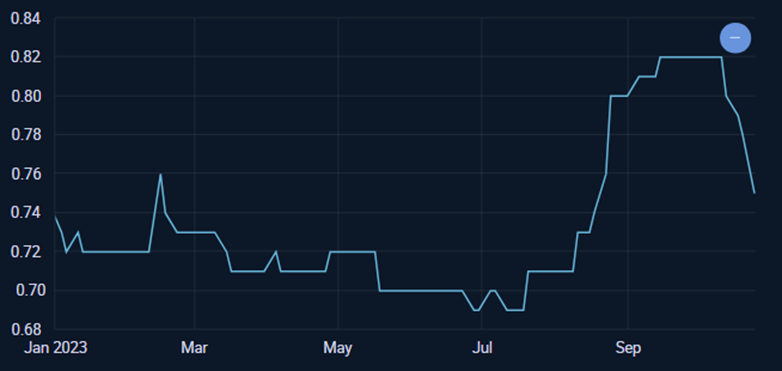Nov 01 2023
 These summaries are produced by the Feedinfo editorial and analyst teams on a weekly basis for customers in addition to the extensive pricing intelligence, news coverage and scientific information hosted within the platform itself.
These summaries are produced by the Feedinfo editorial and analyst teams on a weekly basis for customers in addition to the extensive pricing intelligence, news coverage and scientific information hosted within the platform itself.
To find out more about Feedinfo services, and to see the tool for yourself, get in touch to request your Free Trial, today.
From the Feedinfo Editorial Desk
Chinese biotech firm Huaheng is reportedly planning a new flexible manufacturing line for amino acids. Located in Inner Mongolia, the new unit will bring online tens of thousands of tonnes of production capacity for valine and arginine when it launches in May 2025.
In the US, though, attention was focused on another Chinese amino acids manufacturer, as Republicans in the House of Representatives urged the Executive branch to block imports of products made by Fufeng, alleging the company falls foul of the Uyghur Forced Labor Prevention Act (UFLPA). As Feedinfo has previously reported, the initial implementation of the UFLPA saw products which were not even being manufactured in the Uyghur province of Xinjiang, including threonine, held up by customs authorities.
Meanwhile, companies in the animal nutrition value chain have begun releasing their quarterly results. dsm-firmenich is now expecting a negative vitamin impact of about €500 million for FY2023, up from the previously forecast €400 million. Balchem, for its part, noted the impacts of challenging market conditions in European feed and the pressure from Chinese exports of animal nutrition products.
When it comes to new capacities, the last week has seen news of trace minerals provider Zinpro opening a blending facility in Marialva, in the state of Paraná, Brazil. On the other side of the Atlantic, Danish co-op DLG announced plans for a green biorefinery project led by its affiliate BioRefine, which will transform raw materials including alfalfa, white clover, and sea lettuce into protein isolate and concentrate ingredients for animal feed and human food.
Shannon Behary
Senior editor, Feedinfo
From the Feedinfo Analyst Desk
Visit the Feedinfo Pricing pages to see all feed additive pricing movements from the last week.

The Chinese lysine sulphate market was described as “crushed” by several sources in the past week, with domestic prices dropping by 17% within a month due to low domestic demand and this year’s overcapacity situation. Lysine HCl and threonine prices were comparatively stable.
Vitamin E continued its weak trend, while vitamin B1 and B2 prices firmed in the region.
In Europe, prices were on the rise for methionine, lysine, and threonine amid limited availability. Vitamin prices were mostly stable, but a declining trend was seen on vitamin E amid poor demand.
Demand remains weak in the US amid bird flu outbreaks. Several commercial turkey operations across four states confirmed cases of highly pathogenic avian influenza (HPAI) in the last week. This latest outbreak adds to a series of HPAI occurrences with the fall migration. The 2022 outbreak affected nearly 60 million birds, making it the deadliest in US history.
In Brazil, demand is steady with some customers looking to cover into Q1 amid concerns of shipping delays around Chinese New Year. Methionine prices remain firm, while lysine and threonine prices have eased.
In minerals, phosphate price indications are on the rise in Europe as some suppliers are said to be short on inventory for December/January delivery due to raw material issues.
Lydia Ma
Senior Analyst (Asia), Feedinfo



